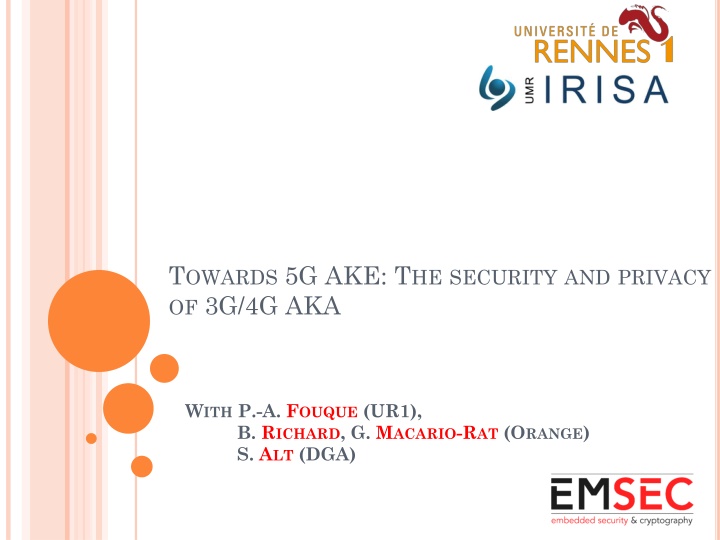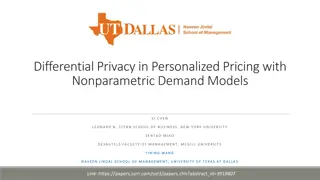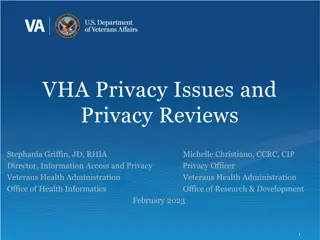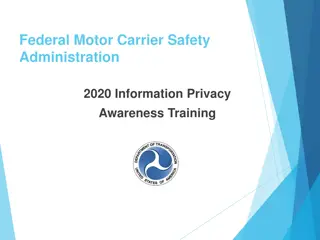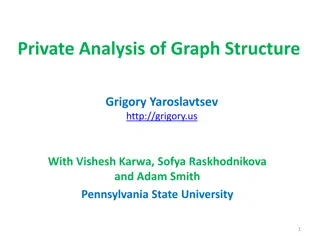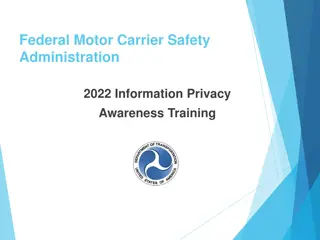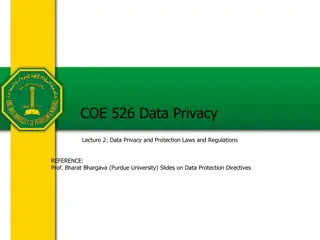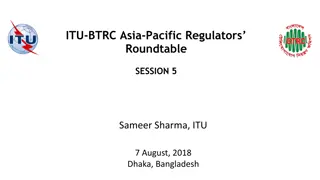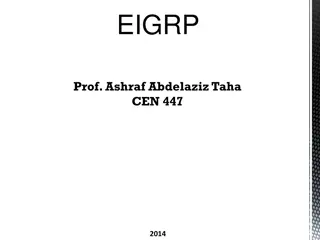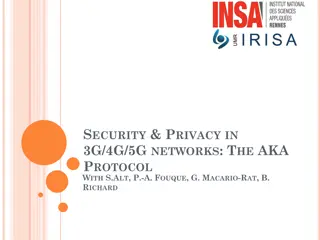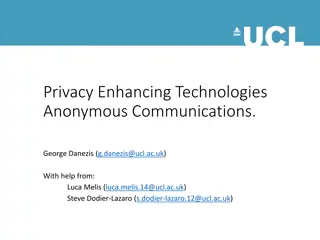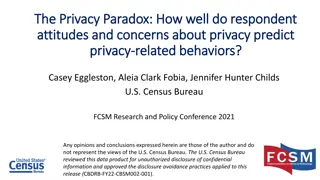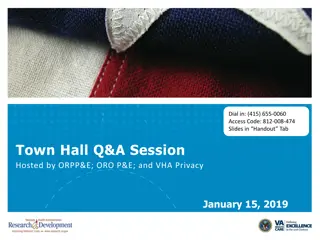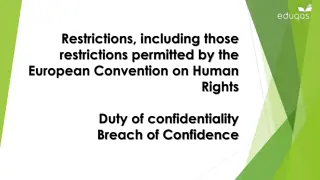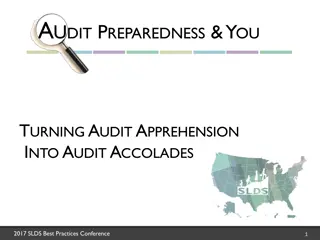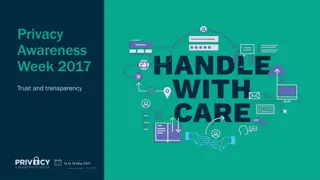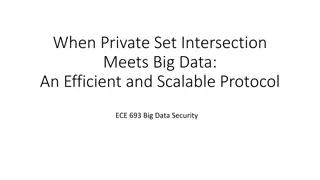Enhancing Security and Privacy in 5G AKE Protocol
This content discusses the authentication and key exchange (AKE) protocols in the context of 3G/4G and the upcoming 5G networks. It covers the challenges of securing communication over insecure channels, the typical 2-party AKE authentication process, the security aspects of AKE against adversaries like Man-in-the-Middle attacks, real-world implementation scenarios, and specifics of the AKA protocol used in 3G/4G networks.
Download Presentation

Please find below an Image/Link to download the presentation.
The content on the website is provided AS IS for your information and personal use only. It may not be sold, licensed, or shared on other websites without obtaining consent from the author.If you encounter any issues during the download, it is possible that the publisher has removed the file from their server.
You are allowed to download the files provided on this website for personal or commercial use, subject to the condition that they are used lawfully. All files are the property of their respective owners.
The content on the website is provided AS IS for your information and personal use only. It may not be sold, licensed, or shared on other websites without obtaining consent from the author.
E N D
Presentation Transcript
TOWARDS 5G AKE: THE SECURITY AND PRIVACY OF 3G/4G AKA WITH P.-A. FOUQUE (UR1), B. RICHARD, G. MACARIO-RAT (ORANGE) S. ALT (DGA)
SECURE CHANNELS Goal: Secure communication over insecure channels Insecure channels: The Internet (HTTP://) Mobile networks (2G, 3G, 4G ) Bluetooth Radio Frequency Channels Secure channels: Messages exchanged over this channel could be intercepted, but not read by active 3rdparties (Man-in-the-Middle attackers)
TYPICAL 2-PARTY AKE Authentication & KE Secure Channel
SECURITY OF AKE Meet the adversary: A Man-in the Middle, aims to break channel security Can interact in multiple sessions of many parties Can corrupt parties to learn long-term keys Can reveal computed session keys Forward-secrecy: if the adversary corrupts a user, it cannot break the security of past sessions AKE + SC
REAL-WORLD AKE In practice, ensures: Secure Internet browsing (TLS/SSL) Mobile services (AKA) Payments Personal identification (ID cards/passports) Security of protocol only proved for 2-party use Yet sometimes, handshakes are proxied, by semi- trusted third parties Is the resulting protocol still secure?
AKA AND 3G/4G NETWORKS Communication as a service for mobile users Users (clients) subscribe to an operator and expect service anywhere, everywhere Client Server Operator Radio link Secure channel Service provided by servers: Local service: usually affiliated with client s operator Roaming: server affiliated with partnering operator Requirement: secure Client-Server channel, with server only semi-trusted
THE AKA PROTOCOL Standardized in the 1990s by 3GPP Designed to be a 3-party protocol, in which the server acts as a proxy between the client and operator Symmetric-key and stateful protocol 3-tiered trust: Operator is trusted with all data: client key ???, operator key ????, and client-specific state ?????,? Client trusted with almost everything: client key ???, a function of the operator key ????, client state ???? Server trusted with nothing: only manages identity management Additional concern: client privacy
THE BASIC 2-PARTY PROTOCOL skC,skop,SqnOp,C UID skC,skop,SqnC UID ??? Update ?????,?, generate fresh ?, do: ?????= ?1???,????,?,???,??? ????= ?2(???,????,?) ?? = ?5(???,????,?) ???? = ??? XOR ?? | ??? | ????? ?? = ?3 ???,????,? ?? = ?4(???,????,?) ? | ???? Compute ??, get ?????,? check ????? If ??? {???, ,???+ ?} compute: ??,??,??? = ?2(???,????,?) ??? Else: ?????? Check: ??? == ????
RESYNCH PROCEDURE skC,skop,SqnOp,C IMSI skC,skop,SqnC IMSI If ????? verifies, but ??? out of range Compute: ?? = ?5 ???? ???,????,? = ?1 ???,????,???,???,? ???XOR ?? || ???? Compute:?? , get ??? Check: out of range Check: ???? Set ???? ? = ??? Start from there.
INTRODUCING THE THIRD PARTY The server is not trusted to know ???,????,????,?????,? However, it is the server that provides service to the client Only legitimate clients may receive the service Client will only receive service from legitimate servers How can authentication work without client secrets? Server used as proxy, does only identity management Client identifiers: IMSI/TMSI also stored by client and server Area identifier: LAI, unique per server/area IMSI known by all, (TMSI, LAI) tuple handled by server In 4G, TMSI and LAI replaced by GUTI
AKA PROTOCOL STRUCTURE Operator Client Server skC,skop,SqnOp,C skC,skop,SqnC (TMSI, LAI) or IMSI Get IMSI Batch Auth.vectors Challenge-Response TMSI reallocation
SECURITY WEAKNESSES OF AKA Server impersonation by offline relays UID Request UID Request IMSI/TMSI, LAI IMSI/TMSI, LAI Auth. challenge Auth.challenge Main causes: No authentication of UID No nonce on client side
SECURITY WEAKNESSES OF AKA (CONTD) Impersonation/key-distinguishing attack [ZF03]: Corrupted Server S Send Unsused auth. vectors ??{?+1}, ,??{?} Client C Server S* Operator Op User identifier Challenge-Response based on AV{q+1}
SECURITY OF AKA What AKA guarantees: C-imp. security: even for server corruptions & offline relays S-imp. security: no server corruptions, no offline relays Key-indistinguishability: no server corruptions State confidentiality Soundness Where AKA security fails: Server corruption attacks reveal session keys Thus even sessions in safe areas are vulnerable IMSI/TMSI insecurity leads to offline relays
PRIVACY OF AKA 3GPP requirements: ID-Hiding: nobody can trace the client s IMSI Location-hiding: nobody can trace the client s LAI Untraceable: nobody can link services to clients IMSI catcher [S07] attackers break the first two: First get the LAI Then force IMSI revelation [BVR15]: encrypt TMSI with PKE But this still allows traceability UID Request TMSI/LAI R/LAI IMSI Request IMSI
TRACEABILITY ATTACKS Distinguishing between two clients allows traceability UID Request UID Request (Encrypted) UID (Encrypted) UID Auth. challenge Auth.challenge Adv. does not know which client this is But he can trace it
TRACEABILITY BY RESYNCHRONIZATION UID Request UID Request IMSI/TMSI IMSI/TMSI Update SqnOp,C Auth.challenge Auth. challenge No update Resynchronization Failure (wrong key) Attack repeated a number of times
TRACEABILITY BY TMSI-REALLOCATION UID Request UID Request IMSI/TMSI IMSI/TMSI Auth.challenge Response Enc(TMSI) random
OUR COUNTER-PROPOSALS Easy fix: security even with server corruptions Add server identifier to all cryptographic functions Even if a server is corrupted, the adversary cannot use its identity in a different area Harder fix: better privacy Encrypt TMSI in smarter way: Use symmetric encryption inside PKE scheme Use Operator as soon as an attack is detected Remove need for resynchronization Add authentication at TMSI reallocation Optimality: impossibility result for better privacy
NEED FOR NEW PRIMITIVES 3G/4G AKA provides some limited security And we can fix it to get better privacy But should we use it for 5G networks? Some AKA problems: Currently all computation done at the operator s end Legal interceptions: operators reveal long-term keys thus giving away more data than necessary Strong deviation in practical implementations For instance TMSI, LAI not always used in practice since you have no privacy, get over it! Application-layer primitives problematic No concept of end-to-end , everything goes through Op
CHALLENGES FOR 5G A fundamental leap (akin to TLS 1.3 vs 1.2) What we need: Protocol that allows for unfederated E2E security including Peer-to-Peer types of connections Usability: must answer to Legal Interceptions But we should allow operators to give away less data Different handshakes for different situations: Roaming and domestic Client-server vs. P2P Better application-layer primitives Including lightweight primitives for data-stream transfer Efficiency, compliance to legal standards, ease of use!
